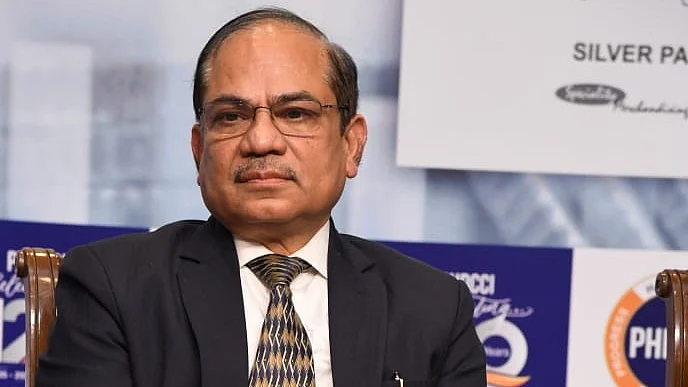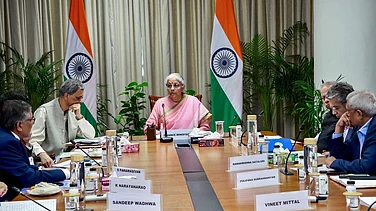India’s latest customs proposals focus on rationalizing the tariff structure and addressing duty inversion to enhance domestic manufacturing, promote exports, and provide relief to consumers.
Fulfilling the commitment to review the customs rate structure announced in July 2024, the Budget proposes eliminating seven customs tariff rates for industrial goods, in addition to the seven removed in the 2023-24 Budget. As a result, only eight tariff rates, including the ‘zero’ rate, will remain. Furthermore, the Budget limits the levy of cess or surcharges to just one per category. However, with China being a major exporter to India, the tariff reductions raise concerns about potential dumping. In an exclusive interview with Outlook Business, Sanjay Kumar Agarwal, Chairman, Central Board of Indirect Taxes & Customs (CBIC) discusses how the reforms will boost trade while ensuring strong anti-dumping safeguards.
Edited excerpts from the interview:
Revenue loss due to custom rate changes and duty exemptions will be Rs 2600 crore. How do you plan to sustain the tariff revenues after duty exemptions?
In this budget, two things have been done: one is custom duty rate rationalization, and in that exercise, if some items are subjected to cess as well as surcharge, we have exempted the surcharge on those items. In the rate rationalization exercise, generally, we have imposed an equivalent amount of Agriculture Infrastructure Development Cess (AIDC) to keep the duty incidence level the same, but in certain items, it is slightly less than that, so this is resulting in a revenue loss of Rs 1,900 crores.
In addition to that, in the budget, there are certain items on which exemption has been provided to promote Make in India or to promote exports, so by this entire exercise, including the rate rationalization exercise, the loss of custom duty is to the tune of 2,600 crores. So, if you see that this is around slightly more than 1% of the custom duty realization in the previous year, which was to the tune of 2,33,000 crores, this has been kept in mind while fixing the budget estimate for next year's revenue realization from custom duties, which is at Rs 2.4 lakh crores.
Would it be accurate to assume that this development is a result of pressure from the Donald Trump administration? Given that shortly after the budget announcement, the Trump administration imposed significant tariffs on three countries, how do you interpret this correlation?
The thing is that this exercise was conducted as announced by the Honourable Finance Minister in last year's July budget. So, because of that announcement, this exercise has been conducted. In 2022, 23, and 24, also, 7 tariff rates were eliminated. This year, this exercise has been conducted, and 7 tariff rates have been eliminated. But it is not because of any other reason. But yes, it will have improved the optics about the customs duty structure in India.
With multiple customs duty and tariff rate revisions, do you see an increasing risk of China dumping goods into India, given that China is one of India's largest importers? How do you plan to address this issue?
In case there is a surge of imports from China on any item and there are reasons to doubt that these are as per the market rates, then definitely there are provisions under the customs act for anti-dumping duty or safeguard duty. So, those situations can be handled by investigation if required by Directorate General of Trade Remedies (DGTR).
You mentioned that India will be on par with other ASEAN economies. Given the rate rationalization and customs duty reductions, what level of import growth do you anticipate for the country?
What I have said is not at par; I said that we have moved towards. Yes, not at par but moved towards. Moved towards, so earlier say the distance was 3 percentage points, now it is 2 percentage points. I have never mentioned anything that we are at par. If, say, we are at 10.5 and say they are at 8, so now it is a 2.5 distance; earlier it was 3.5, so we have moved towards that. I do not think that because we have kept the effective incidence of duty at the same level, only in a few items where rates have slightly come down, so it will have any impact on imports because of this exercise. So that is what I want to say: imports will not be impacted much because of this exercise.



























